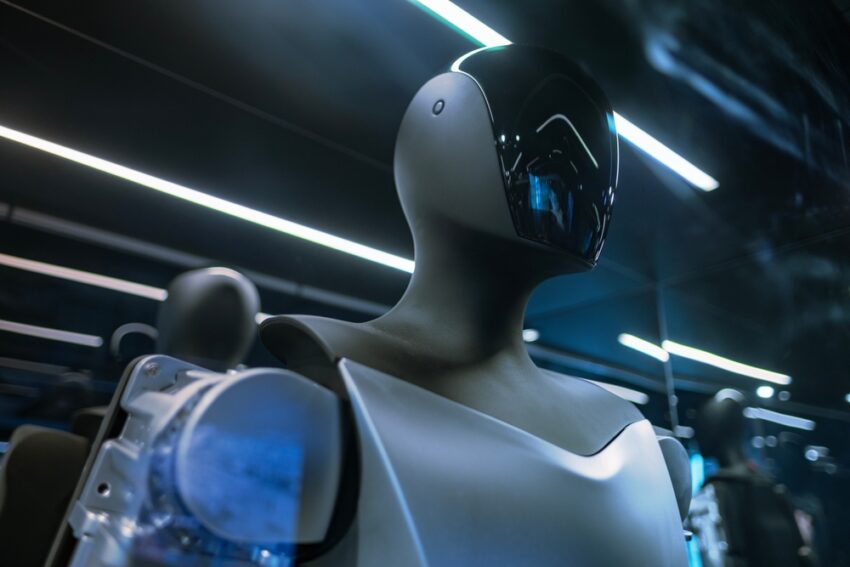Hollywood director Alex Proyas has brought attention to Tesla’s recent product unveilings, highlighting possible imitations of designs from his film “I, Robot.”
The implications of these resemblances have spurred a lively debate, raising questions about the boundaries between artistic inspiration and technological innovation.
Examining the Accusations
Hollywood director Alex Proyas has voiced concerns regarding the apparent similarities between Elon Musk’s latest innovations in robotics and transportation and the designs from Proyas’s 2004 film, I, Robot. Both the Tesla Optimus robot and the Cybercab have sparked conversations due to their resemblance to the futuristic creations in Proyas’s movie. Proyas’s remarks have drawn widespread attention, igniting speculation about the potential influence of science fiction on Tesla’s real-world advancements.
The Role of “I, Robot” Designs
A post by Proyas on social media featured comparative images of his film’s robots alongside those of the Tesla Optimus and Cybercab. In his post, Proyas humorously requested his designs back from Elon Musk, highlighting the visual similarities. Tesla’s $30,000 Cybercab showcases butterfly-wing doors and lacks a steering wheel, reminiscent of the autonomous vehicles in I, Robot. However, fans have noted that the film’s vehicle was inspired by an Audi concept, complicating the allegations.
Musk’s Technological Inspirations
Elon Musk is a known admirer of Isaac Asimov, the author of the book that inspired I, Robot. Musk’s devotion to the world of Asimov is evident in his decision to name Tesla’s unveiling event “We, Robot,” a clear nod to the science fiction writer. Musk has often cited Asimov’s work as a driving force behind his ventures, including SpaceX. Furthermore, Musk’s awareness of AI’s potential perils aligns closely with the themes depicted in Proyas’s film, creating an intriguing backdrop for the current debate.
While the light-hearted tone of Proyas’s comments suggests no immediate legal implications, the parallels between Tesla’s products and the cinematic designs underscore a larger narrative. The impact of science fiction, particularly works from the likes of Asimov, continues to permeate technological development. It raises the question of whether these creations represent homage to visionary art or simple technological synchronicity.
Industry Implications and Public Reaction
The revelation of these similarities has led to a robust discussion among fans and industry experts alike. Some supporters of Proyas argue that the resemblance isn’t merely coincidental, suggesting possible inspiration drawn from the film for commercial purposes. Conversely, others point out that technology often advances through indirect influence and collective innovation, blurring lines between inspiration and imitation.
Musk’s ambitious vision for Tesla involves bridging the gap between imagination and reality by bringing futuristic concepts to life. The debate, regardless of its veracity, underscores the symbiotic relationship between creative arts and technological advancements, which has historically driven progress and inspired public imagination.
Futuristic Designs and Societal Impact
Tesla’s Cybercab’s anticipated production timeline aims for 2026, while the Optimus robot remains in development. As these innovations edge closer to reality, societal implications emerge. The adoption of such technologies could redefine personal transportation and human-robot interaction. The discourse around possible imitation only enhances public intrigue regarding these advancements.
As I, Robot resonates with themes of AI and human-robot relationships, the discussion pivots to the broader impact of robotics and AI on society. The convergence of fiction-inspired design with technological ambition suggests an intriguing future where the boundary between art and reality is increasingly blurred.
Ultimately, this scenario highlights the broader influence of artistic visions on commercial technology. The creative process that informs today’s innovations often draws from myriad sources, blurring the lines between fiction and pioneering reality. It casts a light on the ongoing dialogue about ownership, creativity, and the impact of cultural artefacts on tangible development.
Science Fiction’s Influence on Innovation
The intersection of art and science in technological development is neither new nor surprising. The debate over Tesla’s designs harkens back to a long-standing tradition where science fiction serves as a precursor to technological reality. Innovations often trace their origins to the speculative landscapes created by visionary authors and filmmakers.
As such, the debate surrounding Proyas and Musk serves as a reminder of science fiction’s enduring role in shaping not only public perception but also guiding practical technological evolution. This dialogue emphasises the continuous exchange between creators, visionaries, and engineers in bringing the fantastical into the realm of the real.
Concluding Thoughts
In this scenario, the discourse extends beyond superficial similarities, probing into deeper questions about the interplay between imaginative storytelling and physical innovation. While Elon Musk’s creations mirror the aesthetics of I, Robot, they also represent the natural progression of technological aspirations towards a future once confined to screens and pages.
As Tesla’s ambitious projects evolve, the discussion around their origins remains. It highlights the intricate dance between science fiction and reality.
This dialogue not only enriches our understanding of technological growth but also underscores the everlasting bond between creativity and innovation.

